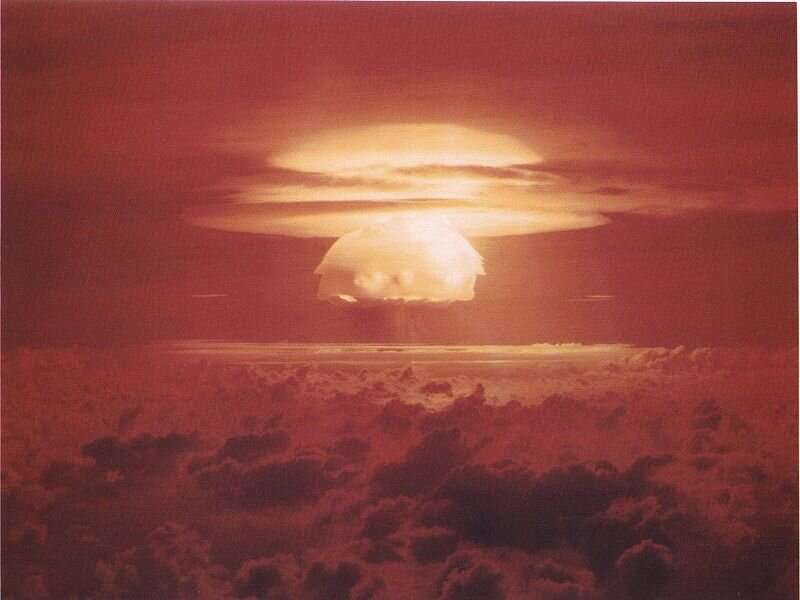July 16, 2019 report
Radiation from atomic testing in Marshall Islands still too high for human habitation

A team of researchers from Columbia University has found that radiation levels from atomic testing in the Marshall Islands are still too high for human habitation. In their paper published in Proceedings of the National Academy of Sciences, the group describes radiation readings of soil samples from four of the islands, and what they found.
Over the years 1946 to 1958, scientists working for the U.S. government carried out 67 nuclear explosion tests in the Bikini and Enewetak atolls in the Marshall Islands. The tests were conducted to learn more about nuclear weapons and their destructiveness. Prior to conducting such tests, officials with the U.S. forcibly removed the atoll residents to other sites in the Marshall Islands. During testing, researchers discovered that fallout was reaching two other inhabited atolls (Rongelap and Utirik), so those people were moved, as well. After testing ended, officials with the U.S. government met with officials from the Marshall Islands to discuss the possibility of cleaning up the test sites, and when the relocated people might return. In this new effort, the researchers ventured to all four of the atolls and tested soil samples for radiation.
The researchers tested soil samples on 11 islands that were part of the four atolls, and found that external gamma radiation levels varied greatly from test to test. They further report that some of the levels were much higher than expected, and far exceeded the legal exposure limit that was agreed to by officials with both countries. Levels on Bikini, for example, were measured as high as 648 millirems per year. The "safe" level set by governmental agreement is 100 millirems per year. The researchers note such levels are also much higher than those found around the Chernobyl and Fukushima nuclear accident sites.
The same group of researchers also conducted two prior tests—one that involved measuring radiation levels in fruit from trees in the affected areas, and another that studied the crater created by the largest explosion to take place in the region. They reported in papers also published in PNAS that they found radiation levels in fruit too high for human consumption on many of the islands. They also found that radiation levels in soil sediments in the crater were still several orders of magnitude higher than normal levels.
More information: Maveric K. I. L. Abella et al. Background gamma radiation and soil activity measurements in the northern Marshall Islands, Proceedings of the National Academy of Sciences (2019). DOI: 10.1073/pnas.1903421116
Journal information: Proceedings of the National Academy of Sciences
© 2019 Science X Network



















